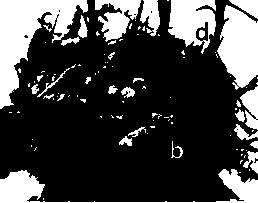Quasi-wild habitat orchid mycorrhizal fungus and cymbidium longibracteatum seed symbiosis culture method
A technology of mycorrhizal fungi and symbiotic culture, applied in the field of plant biology, can solve the problems of inability to grow limited, low survival rate, etc., and achieve the effect of a simple operation path
- Summary
- Abstract
- Description
- Claims
- Application Information
AI Technical Summary
Problems solved by technology
Method used
Image
Examples
Embodiment 1
[0025] Preparation of spring sword capsules: adopt the method of reciprocal cross breeding, the hybrid combination form is 'Yuhaitang' (♀)×'Huangmei' (♂), when the female parent flower is just opened, use sterile tweezers to remove the anther, and carry out after 3 days of flowering For artificial pollination, use sterile tweezers to remove the pollen mass of the male parent, move the pollen mass to the stigma at the top of the female parent's stamen, and let the mucus secreted by the stamen cavity stick the pollen mass, and pollinate 2- 3 flowers, after pollination, put them in a sterile gauze bag, place a tag to indicate the time of pollination, and manage them in isolation. One month after pollination, cut off the weak capsules, keep 1-2 strong capsules in each pot, and apply 1000 times of potassium dihydrogen phosphate solution 2-3 times when the capsules start to expand, so as to promote seed development. About 180 days after pollination, the fruit pods are green and ripe...
PUM
| Property | Measurement | Unit |
|---|---|---|
| Diameter | aaaaa | aaaaa |
Abstract
Description
Claims
Application Information
 Login to View More
Login to View More - R&D
- Intellectual Property
- Life Sciences
- Materials
- Tech Scout
- Unparalleled Data Quality
- Higher Quality Content
- 60% Fewer Hallucinations
Browse by: Latest US Patents, China's latest patents, Technical Efficacy Thesaurus, Application Domain, Technology Topic, Popular Technical Reports.
© 2025 PatSnap. All rights reserved.Legal|Privacy policy|Modern Slavery Act Transparency Statement|Sitemap|About US| Contact US: help@patsnap.com



